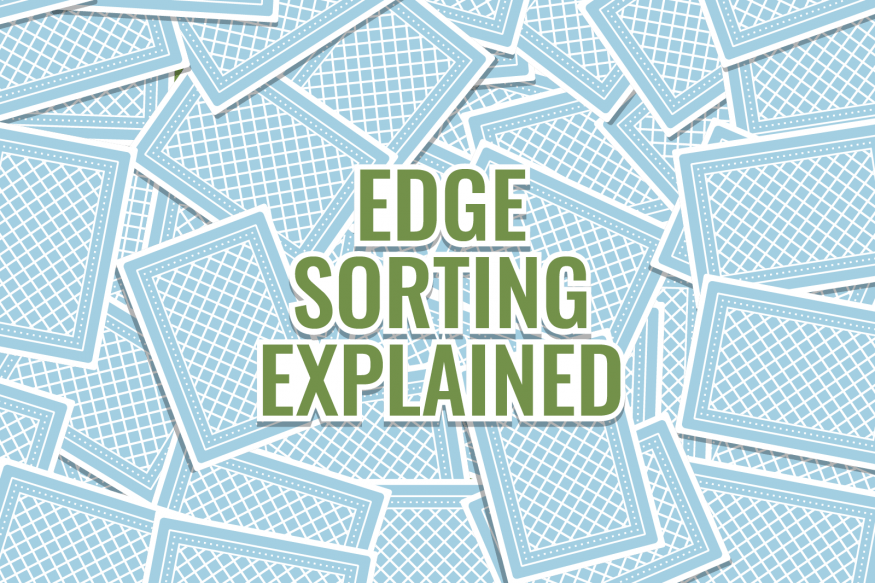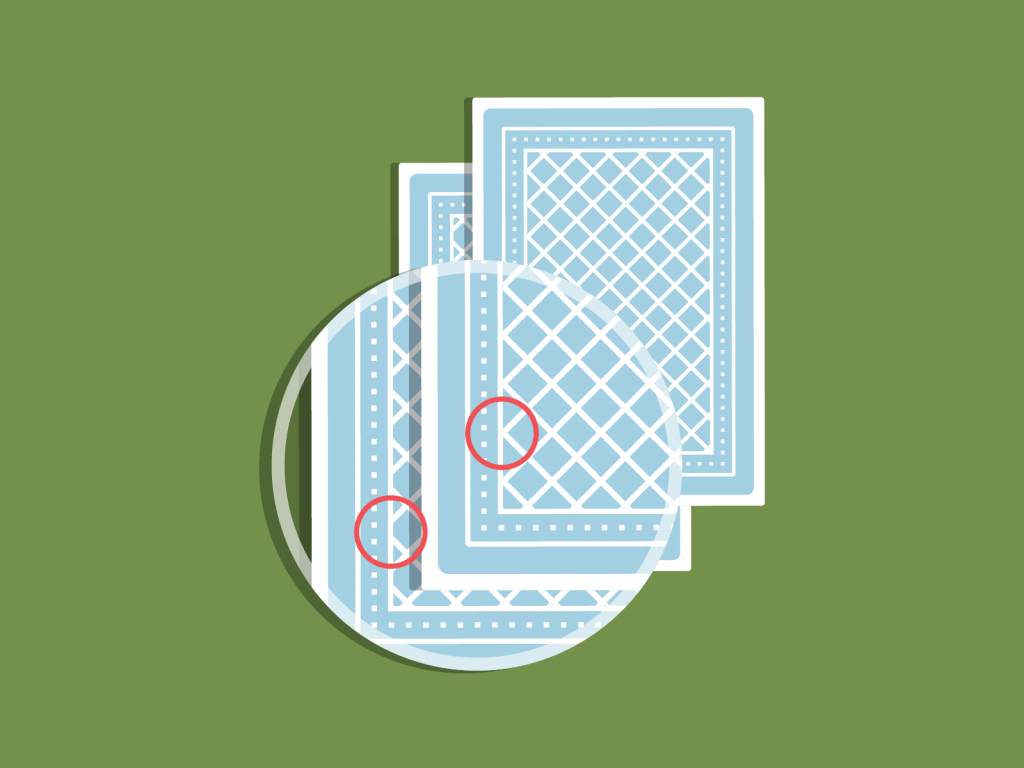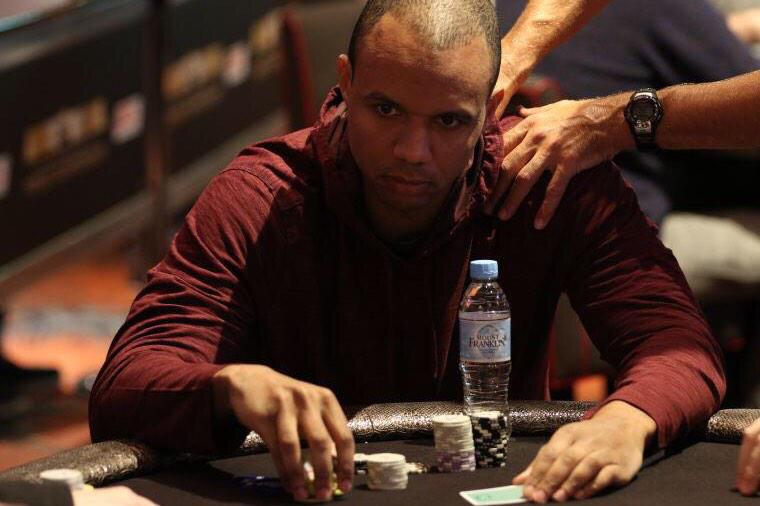Edge Sorting: Cheating or Clever Casino Strategy?

Understanding the Concept of Edge Sorting
Edge sorting is a calculated tactic used predominantly in games like baccarat, where players leverage subtle defects or inconsistencies on the backs of playing cards to identify certain cards and gain an advantage over the casino. This approach requires not only a sharp eye for detail but also relies on using decks where the printed patterns are not perfectly symmetrical.
Most standard playing cards feature repeating geometric patterns, such as circles or diamonds, on their reverse. Occasionally, due to manufacturing imperfections, these shapes are slightly misaligned so that one card edge displays a full shape while the opposite reveals only part of it. Observant players can distinguish between high and low cards based on these minuscule differences - but only if they’re able to ensure cards are rotated in specific ways during play.

Spotting these irregularities is not sufficient by itself. For edge sorting to work, players must find a way to orient cards so the distinguishing patterns align according to card value, which is where strategic manipulation through conversation or persuasion comes in.
Step-by-Step: How Edge Sorting Operates in Practice
Edge sorting is more than just noticing pattern flaws - it involves a subtle but methodical process. Here’s how it’s typically executed:
- **Identifying Suitable Cards**: The player must locate a casino using decks with the necessary misaligned backs.
- **Gaining Dealer Cooperation**: Through seemingly innocent requests (such as claiming superstition), players may persuade dealers to rotate certain cards during play - usually high-value cards in baccarat, like 7s, 8s, or 9s.
- **Organizing the Deck**: Over several hands, the deck gradually becomes sorted: high cards face one way, low cards another.
- **Utilizing Automatic Shufflers**: The advantage is preserved if the casino uses automatic shufflers, which mix the cards without flipping them. Manual shuffling by the dealer would undo all the sorting work.
- **Exploiting the Knowledge**: With practice and keen observation, the player can predict the likelihood of high or low cards being dealt and wager accordingly.
In baccarat - particularly the punto banco variant - this knowledge gives a notable improvement in odds, as predicting when favorable cards will appear can influence betting decisions.
The Legal Status of Edge Sorting
Whether edge sorting constitutes cheating remains controversial and legally nuanced. Most jurisdictions define cheating as interfering with the normal flow of a casino game or using prohibited devices to manipulate results. With edge sorting, the player does not physically tamper with the cards or use external tools; rather, they exploit manufacturing inconsistencies.
While edge sorting itself is not generally classified as illegal, casinos and courts may still refuse to honor winnings earned through this technique. This gray area in gambling law has led to high-profile legal disputes, with most courts ultimately supporting casinos' right to withhold payment if they believe the spirit of fair play has been violated.
Phil Ivey and the Edge Sorting Controversy

Edge sorting entered the global spotlight in the early 2010s, thanks in large part to professional poker player Phil Ivey. In 2012, Ivey and his associate Cheung Yin Sun engaged in high-stakes baccarat at both the Borgata in Atlantic City and the Crockfords Casino in London.
Across four sessions at Borgata, Ivey reportedly won $9.6 million, followed by an additional £7.7 million (about $10 million at the time) during a four-day spree in London. Both casinos began investigations upon noticing these extraordinary winnings. Ivey openly admitted to implementing edge sorting, insisting it was a legitimate strategy and not cheating, but things played out very differently in the courts.
Key tactics used by Ivey and Sun included:
- Requesting specific decks known for pattern inconsistencies.
- Asking the casino to use automatic shufflers.
- Concocting plausible reasons for having certain cards rotated during play, often using superstition as a cover.
- Insisting on reusing the same decks across sessions.
While Crockfords refused to pay out Ivey's winnings (returning only his initial deposit), UK judges ruled that even though edge sorting was not outright cheating or illegal, it was dishonest, because Ivey misled the dealer regarding his intentions. Borgata, which had already paid Ivey, took him to court after his London case became public. After years of litigation, the New Jersey courts allowed Borgata to pursue Ivey’s assets to recover their $9.6 million. Some of this money was eventually seized from Ivey’s World Series of Poker winnings.
Despite these setbacks, Ivey remains among the world’s wealthiest poker players, although the lingering fallout continues to shape perceptions of edge sorting and casino policy.
Lessons Learned: Can Players Really Overcome the House?
The Phil Ivey case dramatically raised awareness of edge sorting among both gamblers and the gambling industry. Since then, card manufacturers and casinos have become increasingly vigilant to avoid deck imperfections and suspicious play. Public opinion remains divided - some see edge sorting as the casino’s oversight and fair game; others view it as a sophisticated form of cheating.
Ultimately, history shows that even if players manage to exploit a loophole, the house almost always has the final say and the legal resources to recover disputed funds. For gamblers, this means that even a temporary advantage can lead to lengthy court battles and financial losses. Edge sorting serves as a reminder that while innovative players will always look for ways to beat the odds, casinos are equally determined to safeguard their interests and maintain the integrity of the game.













